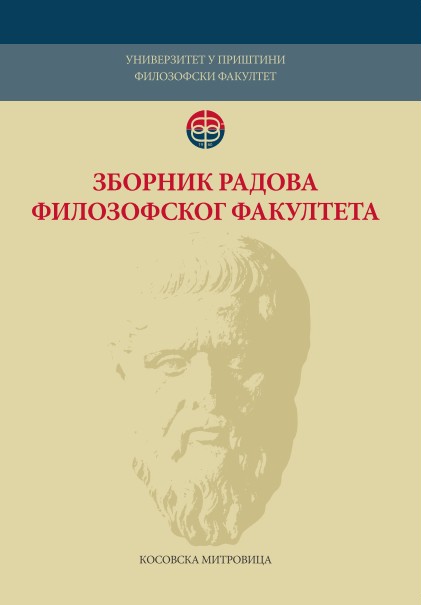Хетеростереотипи о оријенталним језицима у мрежи вербалних асоцијација
Hetero-stereotypes about oriental languages through verbal associations
Author(s): Ivana GligorijevićSubject(s): Language studies, Language and Literature Studies, Foreign languages learning
Published by: Филозофски факултет, Универзитет у Приштини
Keywords: verbal Associations; Association Test; Arabic Language; Turkish Language; Persian Language; Serbian Language
Summary/Abstract: This study deals with Serbian language speakers' perception of Oriental languages. The aim of the study is to determine the most frequent stereotypes about these languages in Serbian culture. The research is done through the analysis of verbal associations, which were collected in an online association test. The participants in the test were required to respond to each of the three stimuli (Arabic language, Turkish language, and Persian language) with one or more words that first come to their mind. Their responses (reactions) were then sorted by frequency and analyzed by various criteria. This survey included 654 respondents, submitting a total of 2,078 reactions. The stimulus Arabic language has evoked the biggest number of reactions (719), followed by Turkish (701) and Persian language (658). Persian language was the first by number of respondents without any association. We have analyzed the most frequent thematic groups, for each of the three stimuli. The results have shown that Arabic language is mostly associated with script, which is compared to hieroglyphs and seen as complicated (due to unusual letters and right-to-left orientation). Turkish language is usually related to TV series and Turkish loanwords in Serbian. Turkish words make the biggest thematic group herein. It includes various Serbian borrowings from Turkish, as well as many Turkish words and expressions that can be heard in popular TV series. Persian is typically associated with something unfamiliar. The biggest thematic group for this stimulus includes various reactions that show how little we actually know about this language. We have also paid attention to the following issues: what Oriental languages are best for, what we know about them, what they are like and what our perception of the intonation and sound of these languages is. The results thereby suggest that Serbian-language speakers are mostly familiar with Turkish, as a result of historical contacts and language borrowing. The most common adjectives describing all three languages are: beautiful, interesting, difficult, complicated, and odd. The sounds of these three Oriental languages are described with various positive and negative adjectives and picturesque expressions.
Journal: Зборник радова Филозофског факултета у Приштини
- Issue Year: 48/2018
- Issue No: 1
- Page Range: 23-42
- Page Count: 20
- Language: Serbian

